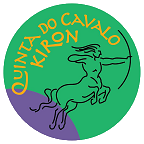Third Pillar: Horse-Mirror and Horse-Mediator
It explains how the horses are converted into powerful “partners -therapists “human facilitators , helping to” translate” to patients/clients their dynamics created in session in order to carry out within themselves the necessary changes. In horse – mirror, the horse, through their behavior always assertive reveals not aware of the attitudes patient/client. Come of morphological, behavioral and emotional aspects. Thus it is facilitated different types of projections by the patient, related to the quality of the parental imagos ( mother/father) and attributes of your inner world (kind of anxieties, defense mechanisms, relational dynamics, resilience). The horse, the “return” through their behavior, emotions which it is designed, aids awareness of the emotional reality of the patient, contributing to their transformation.
In mediator horse, his relational skills and his innate propensity to interact with humans, it allows easily adheres to and participates in the physical and psychic space (affective, emotional) of the therapeutic relationship, mediating the interaction between the various stakeholders: patients and technicians . The horse therapy function “carried over” to the designation of “transitional object” (Donald Winnicott, 1951), defined by the author as the mechanism that will help the child in the transition from fusional relationship (undifferentiated stage mother / baby) to objectal the relationship (separation of consciousness – individuation phase). The projections fall unconscious patient is always the most immature/early features and/or pathological development and are “placed” on the horse – “transitional object”. Like this, The horse mirror, have a seemingly passive position, “reflex” in which the horse gets projected emotional content. In horse-mediator, we have an active and participatory position in the therapeutic space, the “act” behavior in response to the “roles” and projections unconsciously made by the patient/client. In both cases the answer/actual behavior of the horse (approach, detachment, indifference, interest, property/no bond and that quality, aggressiveness), provides the patient awareness of their problems, paving the way for the evolutionary transformation (New depressive dependency registration and/or narcissistic for a model of objectal relationship with individual awareness and acceptance and respect for difference and autonomy of the other).


